Mobility & Pitching Mechanics
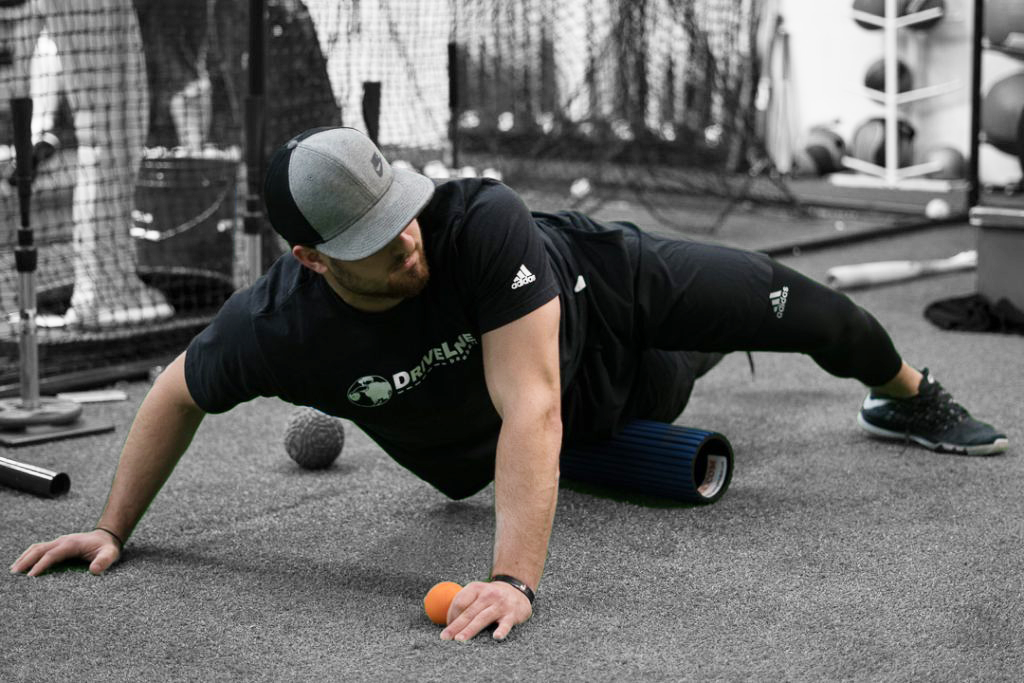
Pitching mechanics are one of the most misunderstood things in baseball. In fact, there’s likely more that we don’t know than what we actually do know.
One thing we do know is how stress affects the main parts of our body during the pitching delivery. As strength coaches, our goal is to not only improving an athlete’s performance but also keeping our athletes healthy.
A huge factor in keeping athletes healthy while improving performance is improving movement quality, specifically in the areas stressed the most during the pitching delivery.
In part one of this series, we are going to talk about which areas to target when doing mobility work in order to improve movement quality that is specific to pitching mechanics.
Before you prescribe mobility exercises to athletes, remember to assess each individual athlete. Each has unique needs that depend on anatomy and deficiencies. You can read about the importance of a mobility screening and how we go about doing that in-gym in Sam Briend’s article Athlete Screening Part 1: Movement Screens.
With all of that said, it’s important to explain what exactly mobility is. Mobility is often confused with flexibility, but the two are not synonymous. Flexibility is simply range of motion while mobility is strength through range of motion. Put most simply, mobility is the ability to produce a desired movement.
Regarding mobility, our top priorities when performing the pitching delivery are getting our arm overhead as easily and pain free as possible, having sufficient internal and external rotation in the glenohumeral joint, and getting our hips open to help create what we call hip-to-scap separation.
Improving Overhead Range of Motion
The biggest things to look for when improving overhead range of motion are scapular upward rotation and thoracic-spine extension.
First, let’s dig into what scapular upward rotation means. When somebody raises his arm overhead, his scapula glides along the rib cage, allowing the movement to be smooth and pain free. The upper trap, lower trap, and serratus anterior work together to upwardly rotate scapula while the levator scapula, rhomboids, and pectoralis minor work to downwardly rotate the scapula back into resting position.
The thoracic spine (the upper and middle back) joins the cervical spine and extends about five inches past the bottom of the shoulder blades. It is made up of twelve vertebrae labeled T1–T12. There is another group of muscles that work to extend and rotate the thoracic spine. These muscles consist of the longissimus thoracis, iliocostalis thoracis, spinalis thoracis, semispinalis thoracis, and rotatores thoracis.
While improving scapular upward rotation and thoracic-spine extension help to improve overhead range of motion, there are other muscle groups that work against overhead range of motion if they get too tight or overactive. These muscles include the latissimus dorsi, teres major and minor, and pectoralis major and minor.
In addition to thoracic-spine extension, the ability to rotate your thoracic spine also plays a pivotal role in throwing performance. If we lack thoracic rotation, our arms will drag to try and create separation. In addition, to make up for a lack of thoracic rotation, we will sacrifice lumbar stability to maintain an upright torso.
Scapular Upward Rotation Excercises
Serratus Wall Slide – Push away from wall to fill up upper back and get serratus engaged. Drive the inside of the shoulder blade toward the armpit.
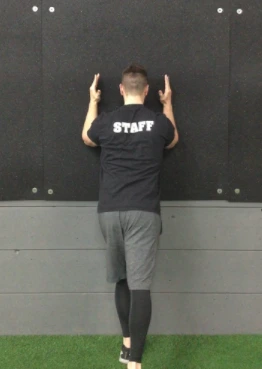
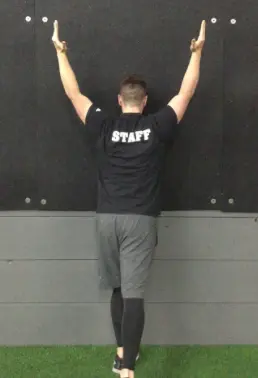
Yoga Push Up – Standard push up while going into a downward dog position at the top.
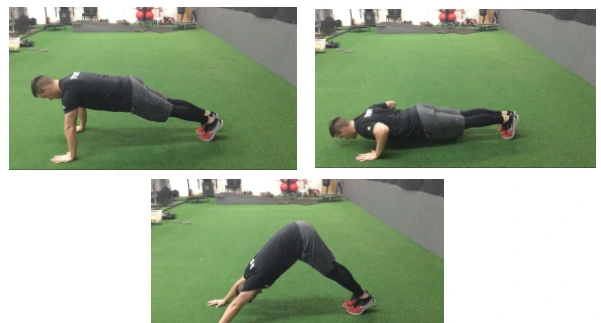
Serratus Upward Jab – Drive the band out and across to activate serratus anterior and drive scapula under armpit.
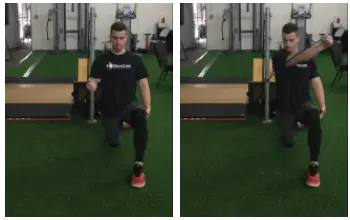
Thoracic-Spine Extension Exercises
Bench T-Spine Mobilization – Straight line from hips to head with elbows out in front of head. Rock back and take heels to butt.

Cat Camel – Round your upper back driving your scapula underneath your armpit, exhale into starting position and drive your scapula toward your spine to extend the upper back.

Prone Sphinx – Keep shoulders packed and reach forward with one hand without letting the other side shrug.

Thoracic-Spine Rotation Exercises
Quadruped Extension Rotation – Pace one hand by your ear and rotate through your upper back following your elbow with your eyes.

Side Lying Windmill – Follow hand with eyes. Move through your upper back.

Soft-Tissue Work
Thoracic Spine Extension
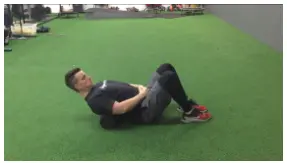
Latissimus Dorsi
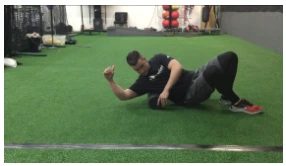
Pec Rolling on Wall

Teres Minor
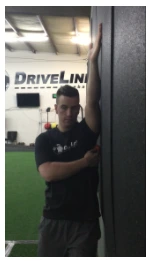
Improving Glenohumeral Joint Range of Motion
In the gym, we not only measure internal and external rotation in the glenohumeral joint, but we also use a dynamometer to measure the force an athlete can apply internally and externally. Because of the amount of throwing pitchers do, it is common for internal-rotation peak force to be higher than external-rotation peak force on the throwing side. However, always assess your athletes.
The anterior shoulder will naturally mobilize itself from repeated throwing, but the more external rotation that your glenohumeral joint can achieve, the more layback you will get during the driveline and elbow-climb phase of the throw. The ability to internally rotate your glenohumeral joint assists in the ability to decelerate your arm after release.
Internal and external rotation is very dependent on rotator-cuff strength. While the rotator cuff assists in external and internal rotation and in elevating the arm into scapular plane, its main function is to center the humeral head within the glenoid fossa.
Because its main function boils down to a stability and strength issue, let’s briefly talk about some mobility exercises to increase range of motion. We’ll get more into this in part two of this series.
The Exercises
Half-Kneeling Cable External Rotation – Scapular Plane – Rotate towards working arm, easy ball in socket rotation.

J-Band Internal Rotation – Start with arms perpendicular to each other and drive top arm into internal rotation.

The Hips
Similar to the importance of internal and external shoulder rotation to the pitching delivery, internal and external hip rotation is also crucial to both performance and injury prevention.
In order to achieve proper hip-to-shoulder separation, or hip-to-scap separation, you must rotate your hips open while keeping your trunk closed at footstrike. Having sufficient hip internal rotation of the back leg and external rotation of the lead leg helps start the hip rotation.
According to the “joint-by-joint” approach, the hips require more mobility in training, which is generally true. However, this is not true for all individuals, so it is important to learn how to assess athletes to determine whether they need more mobility or stability.
Anatomically speaking, everybody’s hips are different. So, athletes into a range of motion that their hips can’t anatomically achieve does more harm than good.
Internal and External Rotation of the Hips
There are three primary issues that cause a lack of internal rotation of the hips. The first is an ipsilateral stability issue. If the athlete has an ipsilateral stability issue, you can prescribe stability exercises in his warm up, like a max-tension plank or half-kneeling stabilize.
The next issue that limits range of motion is tight capsule muscles. If the athlete has tight capsule muscles, have him go through mobility exercises, like a seated 90/90 rotation, and do soft-tissue work to improve range of motion.
Lastly, if neither mobility or stability improves the athlete’s range of motion, assume there is a movement restriction and continue to train hard with a limited range of motion.
Athletes should go through the same process when trying to increase external-rotation range of motion. An anterior stability issue will limit the range of motion and can be improved by performing exercises like a side plank.
Similar to internal rotation, if athletes have tight capsule muscles that limit external rotation, have them perform mobility exercises and soft-tissue work.
If neither mobility nor stability improve the range of motion, assume there is a movement restriction and continue to train hard with limited range of motion.
The Exercises
Clam Shells – Keep the glutes tight and press bottom knee into the ground while raising top knee. Movement should be within the hip socket.
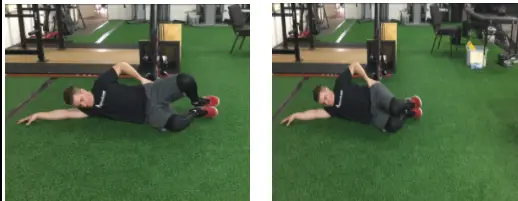
Hip Bridges – Engage core and drive shoulders into the ground bridging the hips into the air. Make sure you have glute activation at top.

Pigeon Pose – Press hands into the ground and take tailbone to the sky.

Half Kneeling Glute Motus – Squeeze glutes tight and rock back and forth.
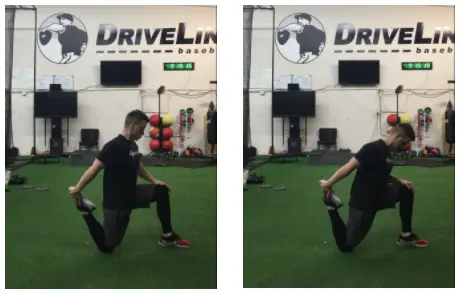
Seated 90/90 Rotations – Drive knees away from each other until one knee is into full external rotation and other into full internal rotation.

This article was written by Driveline Trainer Kyle Rogers
Comment section
Add a Comment
You must be logged in to post a comment.
Managing Volume and Intensity in Off-Season Workouts - Driveline Baseball -
[…] Mobility/Flexibility program (bands/foam rolling/stretches) […]
Weighted Ball Training Gone Wrong - Driveline Baseball -
[…] assessments. These assessments will allow coaches to individualized strength, stability, and mobility exercises for their athletes. Performance screens can also be done to get a better idea of their […]